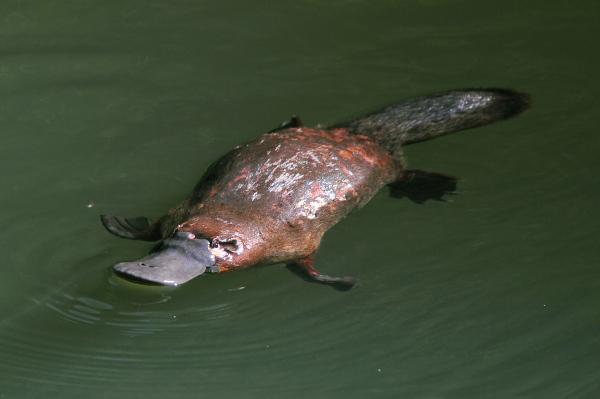THE human skin color results from a relationship established between several genes. It is a complex inheritance that determines a series of phenotypes (genotype expression plus environment interaction), ranging from very light skin to very dark skin, with several intermediate phenotypes. In addition to the factors genetic, we must not forget that environmental factors also determine the color of the skin.
Read too:The skin and its characteristics
→ How is skin color genetically determined?
The genetic inheritance of skin color is established by a large number of genes, being considered a polygenic inheritance, that is, in which the additive effect of two or more genes on a particular single trait is observed. The skin color, therefore, is considered a quantitative character, as it is a characteristic controlled by many genes and each one has a cumulative contribution to the formation of the final phenotype.

To better understand the polygenic inheritance of skin color, we will consider three genes:
A, B and Ç. These genes contribute to darkening the skin and have incomplete dominance over a, b and ç. Thus, a person with very dark skin would have a genotype AABBCC, while a very light-skinned person would have aabbcc. An intermediate skin color would be seen in AaBbCc individuals.Skin color, as already said, has alleles with an additive effect, thus genotypes such as AABbcc and AaBBcc would have the same contribution to skin color, since they have three units that make the skin more dark.
Read too:Basic Concepts in Genetics
Do not stop now... There's more after the advertising ;)
→ Crossbreeding involving genetic inheritance of skin color
See below a simplified cross between heterozygous individuals (AaBbCc). In this crossover, three genes that affect skin color were considered. Each heterozygous individual has three alleles that relate to dark skin (A, B and C) and three alleles for light skin (a, b and c). The first row and the first column show the gametes of each of these individuals.
ABC |
ABC |
ABC |
ABC |
ABC |
ABC |
ABC |
ABC |
|
ABC |
AABBCC |
AABbCC |
AaBBCC |
AABBCc |
AABbCc |
AaBbCC |
AaBBcc |
AaBbCc |
ABC |
AABbCC |
AAbbCC |
AaBbCC |
AABbCc |
AAbbCc |
AabbCC |
AaBbCc |
AabbCc |
ABC |
AaBBCC |
AaBbCC |
aaBBCC |
AaBBcc |
AaBbCc |
aaBbCC |
aaBBCc |
aaBbCc |
ABC |
AABBCc |
AABbCc |
AaBBcc |
AABBcc |
AABbcc |
AaBbCc |
AaBBcc |
AaBbcc |
ABC |
AABbCc |
AAbbCc |
AaBbCc |
AABbcc |
AAbbcc |
AabbCc |
AaBbcc |
Aabbcc |
ABC |
AaBbCC |
AabbCC |
aaBbCC |
AaBbCc |
AabbCc |
aabbCC |
aaBbCc |
aabbCc |
ABC |
AaBBcc |
AaBbCc |
aaBBCc |
AaBBcc |
AaBbcc |
aaBbCc |
aaBBcc |
aaBBcc |
ABC |
AaBbCc |
AabbCc |
aaBbCc |
AaBbcc |
Aabbcc |
aabbCc |
aaBBcc |
aabbcc |
In this picture we can see the presence of seven different phenotypes, in the following proportion: 1:6:15:20:15:6:1. Individuals with the AABBCC genotype have darker skin, while individuals aabbcc have lighter skin. The more dark color alleles a person has (A, B, or C), the darker the skin.
If you have questions about the crossover presented, access the text Punnett's paintingand ask your questions about the topic!
→ Exercise involving genetic inheritance of skin color
|
(IFBA) The process of formation of the Brazilian people is historical, cultural and biological. The determination of skin color represents a case of polygenic inheritance and its expression is influenced by environmental conditions. About the mechanism of polygenic inheritance, it is correct to state: a) The expression of the characteristic for skin pigmentation represents a case of epistasis, in which a gene neutralizes the action of that which is not its allele. b) Variations in skin pigmentation can be explained by the number of genes that have cumulative effects. c) Environmental alterations cause modifications in the genes responsible for the expression of the characteristic, being responsible for pigment variations in the population as a whole. d) All variations in skin pigmentation can be explained by a pair of alleles that can be expressed as homozygous or heterozygous. e) Because it is an expression of dominance and recessivity, in polygenic inheritance, the genotypes recessive homozygotes behave like lethal genes, therefore, they do not express themselves in the set of population. |
Resolution:
Letter B. Skin color is a complex genetic inheritance. It is a polygenic inheritance, therefore, several genes are involved and contribute to the final phenotype.
By Vanessa Sardinha
Biology teacher
Would you like to reference this text in a school or academic work? Look:
SANTOS, Vanessa Sardinha dos. "Genetic Inheritance of Skin Color"; Brazil School. Available in: https://brasilescola.uol.com.br/biologia/a-cor-pele-na-especie-humana.htm. Accessed on June 27, 2021.

